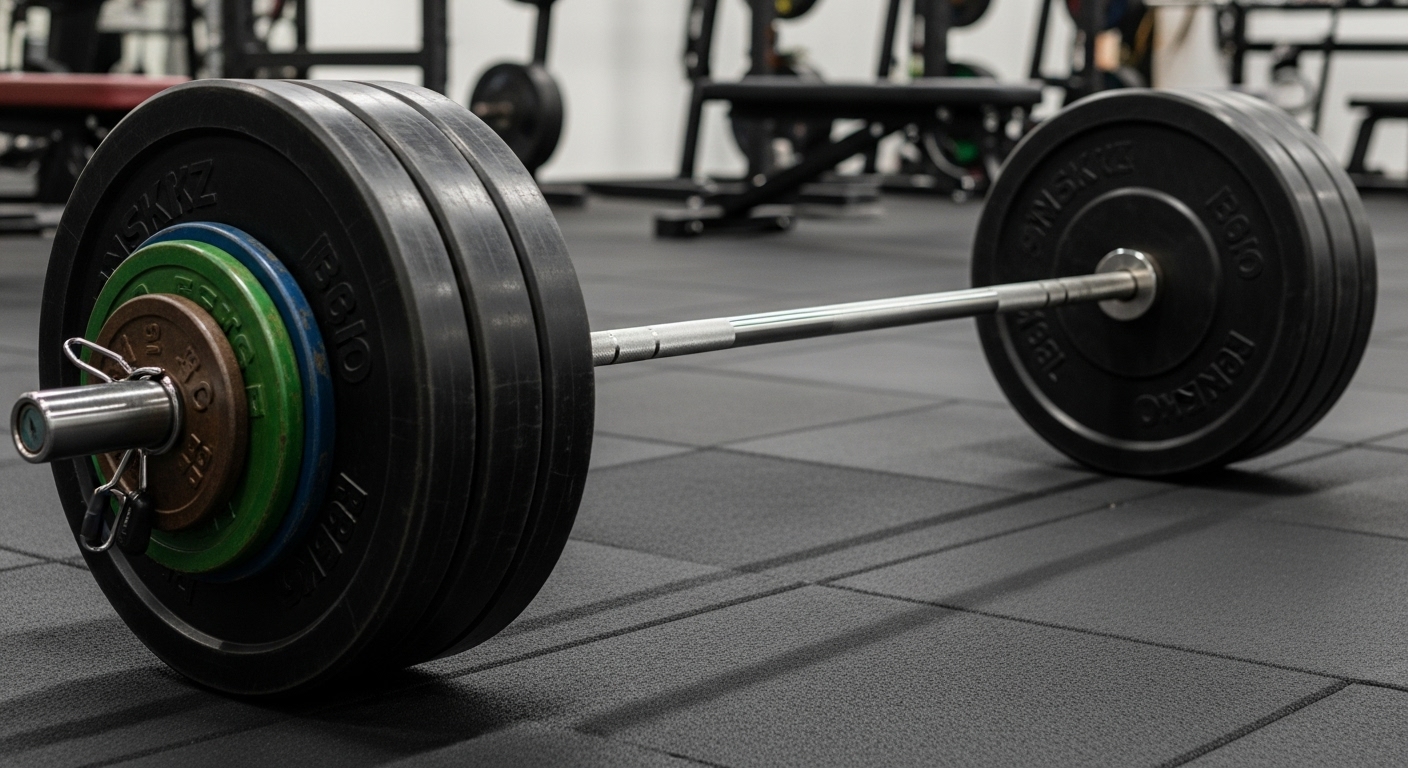The fitness world is rife with debates, but few are as enduring as the showdown between strength training and cardio. For anyone looking to transform their body, shed stubborn fat, or build a more athletic physique, understanding the unique benefits of each exercise type is crucial. Beyond just the number on the scale, what truly matters for a healthier, more sculpted body is your body composition – the ratio of fat to lean muscle mass.
This comprehensive guide will unpack the science behind strength training vs cardio for weight loss and strength training vs cardio for building muscle. We’ll dive deep into how each impacts fat loss, metabolism, and muscle gain, helping you make informed decisions for your fitness journey. So, if you’re wondering why strength training is better than cardio for weight loss for long-term results, you’re in the right place.
Understanding Strength Training
Often perceived as solely for bodybuilders, strength training offers a wealth of benefits for everyone, especially those focused on weight management and overall health.
What is Strength Training?
Strength training, also known as resistance training, involves any physical movement where you use your body weight or equipment (like free weights, resistance bands, or machines) to build muscle mass, strength, and endurance. It encompasses various forms, from muscular hypertrophy (muscle growth) and muscular endurance to maximum muscular strength and explosive power.

How Strength Training Impacts Weight Loss (Fat Loss)
While cardio burns more calories during a session, strength training for weight loss offers unique metabolic advantages that make it a powerful tool for sustainable fat loss.
- Metabolic Boost:
Strength training is a metabolic game-changer. Muscle tissue is far more metabolically active than fat tissue, meaning it burns more calories at rest. By increasing your lean muscle mass through resistance training, you effectively elevate your Resting Metabolic Rate (RMR), turning your body into a more efficient, calorie-burning machine 24/71. - Excess Post-exercise Oxygen Consumption (EPOC) / “Afterburn Effect”:
One of the most significant advantages of strength training is the “afterburn effect,” technically known as Excess Post-exercise Oxygen Consumption (EPOC). After an intense strength workout, your body continues to burn extra calories for hours – sometimes up to 48 hours – as it works to repair muscle tissue, replenish energy stores, and return to a pre-exercise state2. This sustained calorie expenditure contributes significantly to overall fat loss. - Body Composition Changes:
Even if the number on the scale doesn’t drop dramatically, strength training for fat loss profoundly impacts your body composition. By building lean muscle mass and decreasing fat mass, you achieve a leaner, more toned physique. Muscle is denser than fat, so it takes up less space, leading to a noticeable improvement in how your clothes fit and how you look in the mirror, even at the same weight. This body recomposition is a key reason why strength training is better than cardio for weight loss in terms of aesthetic results. - Hormonal and Health Benefits:
Beyond aesthetics, strength training offers crucial health benefits that indirectly support weight loss. It improves insulin sensitivity, helping your body manage blood sugar more effectively, and reduces the risk of chronic conditions like heart disease, type 2 diabetes, and osteoporosis.
Understanding Cardiovascular Training (Cardio)
Cardiovascular exercise, commonly known as cardio, is a cornerstone of fitness, essential for heart health and an immediate calorie burn.
What is Cardio?
Cardio refers to any activity that significantly elevates your heart rate and uses oxygen as a fuel source over an extended period. Popular forms include running, cycling, swimming, jogging, dancing, and High-Intensity Interval Training (HIIT).

How Cardio Impacts Weight Loss
Cardio has undeniable benefits, especially for initial weight loss and overall health.
- Immediate Calorie Burn:
Cardio is highly effective at burning a significant number of calories *during* a session. For an equivalent duration, a moderate to high-intensity cardio workout generally burns more calories than a strength training session3. This immediate calorie expenditure is excellent for creating the necessary calorie deficit for fat loss. - Fat as Fuel:
During prolonged, moderate-intensity cardio, your body primarily uses stored fat as its fuel source, making it an efficient way to directly tap into fat reserves. - Cardiovascular Health:
The most widely recognized benefit of cardio is its ability to strengthen your heart and lungs, improve circulation, and boost overall endurance. These benefits are vital for long-term health and well-being.
The “Does Cardio Burn Muscle?” Myth Debunked
A common concern, especially among those focused on muscle building, is whether cardio will cause muscle loss. The good news is that for most people, moderate cardio does not typically burn muscle and can even contribute to muscle growth, particularly in older adults.
Benefits of cardio for muscle include improved blood flow, which aids in muscle recovery and nutrient delivery, and enhanced muscle endurance. However, there are instances where cardio *might* hinder muscle gains:
- Excessive, Prolonged Cardio: Performing very long sessions (e.g., more than 90 minutes) of moderate to high-intensity cardio, especially without adequate nutritional intake, can lead to muscle protein breakdown as the body seeks additional energy sources4.
- Timing: Performing intense cardio immediately before weight training can fatigue muscles, potentially reducing the quality and effectiveness of your strength workout.
Strength Training vs. Cardio for Building Muscle
When the goal is to build muscle, the distinction between these two exercise forms becomes clearer.
Strength Training: The Primary Driver of Hypertrophy
There’s no debate here: strength training is the primary driver of muscle hypertrophy (muscle growth). Resistance training creates micro-tears in muscle fibers, which, with proper nutrition and recovery, stimulate muscle protein synthesis. This process leads to the repair and growth of stronger, larger muscles.
Strength training causes specific adaptations, increasing muscle strength, power, and size. It is absolutely essential for preserving muscle mass during periods of weight loss and for preventing age-related muscle loss (sarcopenia).

Cardio’s Role in Muscle Building
While not a direct builder of muscle mass in the same way as lifting weights, cardio can play an indirect, supportive role in muscle building:
- Improved Recovery and Training Capacity: Moderate cardio can improve blood flow, which helps remove waste products and delivers nutrients to muscles, aiding in recovery. This enhanced recovery can allow for more frequent or intense strength training sessions.
- Enhanced Work Capacity: Better cardiovascular fitness means you can sustain higher-intensity strength workouts for longer, potentially leading to greater overall volume and muscle stimulus.
- Specific Muscle Development: Certain types of cardio, like sprinting or cycling, can contribute to lower body muscle development due to the high muscular demands they place on the legs.
- Concurrent Training: Combining both cardio and strength training (known as concurrent training) has been shown not to inhibit muscle growth or overall maximal strength, especially if the sessions are spaced out (e.g., on separate days or with several hours in between)5.
Why Strength Training is Often Highlighted for Weight Loss (Fat Loss)
The core of why strength training is better than cardio for weight loss lies in its long-term metabolic impact and ability to sculpt your body.
- Long-Term Metabolic Advantage: The sustained increase in your Resting Metabolic Rate from greater muscle mass makes strength training an incredibly powerful tool for *maintaining* fat loss. You burn more calories all day, every day, simply by existing with more muscle. This is a crucial distinction from cardio, which primarily burns calories during the activity itself.
- EPOC’s Impact: The higher and longer-lasting EPOC response from strength training translates to more calories burned even after your workout is over, compounding its effectiveness for fat loss.
- Body Recomposition: Weight training for fat loss fundamentally changes your body’s fat-to-muscle ratio. You become leaner, firmer, and more toned. This is often more satisfying and sustainable than simply seeing a lower number on the scale.

The Synergistic Approach: Combining Both for Optimal Results
While we’ve discussed why strength training is better than cardio for weight loss in many respects, the truth is, the most effective strategy for overall weight loss, fat loss, and body composition involves combining both types of exercise.
The Best of Both Worlds
Research consistently indicates that integrating both cardiovascular exercise and strength training yields the most comprehensive and effective results for weight loss and body recomposition3. You get the immediate calorie burn from cardio and the long-term metabolic benefits and muscle-building prowess of strength training.
Strategic Integration
- Prioritize Your Goals: If muscle gain is your primary goal, perform strength training before cardio, or ideally, on separate days to avoid performance decrements.
- Moderate Cardio: Incorporate moderate-intensity cardio for heart health, improved recovery, and additional calorie expenditure.
- HIIT or Circuit Training: Consider High-Intensity Interval Training (HIIT) or circuit training, which combine elements of both, for a potent calorie burn and maximized EPOC in shorter durations.

Importance of Nutrition and Recovery
No exercise regimen, no matter how perfectly balanced, can overcome poor nutrition. For fat loss, a consistent calorie deficit is essential. For muscle preservation and growth, sufficient protein intake is non-negotiable. Equally important is adequate rest to allow muscles to repair, grow, and adapt.
Practical Recommendations for Your Fitness Journey
- Assess Your Goals: Are you aiming primarily for fat loss, muscle gain, or a balance of both? Your goals will dictate the emphasis you place on each type of exercise.
- Listen to Your Body: Adjust intensity and volume based on recovery and how you feel. Overtraining can be counterproductive.
- Seek Professional Guidance: A certified trainer or exercise physiologist can help create a personalized plan tailored to your body, goals, and limitations.
- Consistency is Key: The most effective workout plan is the one you consistently stick with over the long term.
Conclusion
In the perennial debate of strength training vs cardio for weight loss and muscle building, it’s clear that both have their merits. However, for sustainable fat loss, enhanced metabolism, and significant body recomposition, strength training for weight loss emerges as a superior strategy. Its ability to build metabolically active muscle and create a prolonged afterburn effect provides long-term benefits that cardio alone cannot match. Cardio, in turn, offers vital cardiovascular health benefits and immediate calorie expenditure.
The ultimate winning strategy is to embrace a balanced, integrated approach. By strategically combining the power of strength training with the health benefits of cardio, you can achieve comprehensive fitness, build a lean and strong physique, and secure sustainable results on your fitness journey. Understanding why strength training is better than cardio for weight loss in terms of long-term metabolic impact is key to transforming your body effectively.
Source Video
References
- 14 Benefits of Strength Training, Backed by Science
- Strength Training vs. Cardio for Fat Loss: What Works Best?
- Cardio or Weightlifting: Which Is Better for Weight Loss?
- Does Cardio Burn Muscle? What You Need to Know
- Concurrent training: Does cardio affect muscle mass and strength gains?


